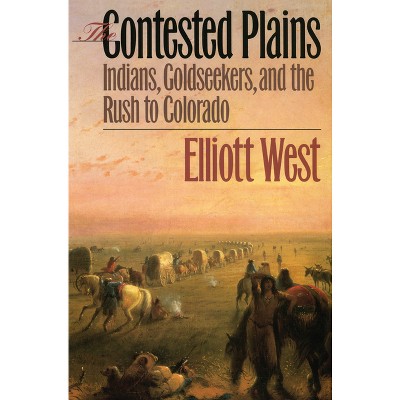Sponsored

The Vanishing American - by Brian W Dippie (Paperback)
In Stock
Sponsored
About this item
Highlights
- Not long after the white man stepped ashore in North America he began killing Indians and pushing those that survived farther and farther west.
- Author(s): Brian W Dippie
- 446 Pages
- History, United States
Description
About the Book
Dippie traces the origins of the assumption that Indians are a vanishing race and documents its insidious effects on U.S. policy toward Indians from the beginning of the nation's history through the Indian New Deal of the 1930s. He describes its role in early attempts at civilization and education, segregation of Indians west of the Mississippi, post-Civil War reform, the Dawes Act and allotment, the graduation of early twentieth-century policy, the reform movement of the 1920s, John Collier's Indian Reorganization Act, and into the 1970s.Book Synopsis
Not long after the white man stepped ashore in North America he began killing Indians and pushing those that survived farther and farther west. And what of his conscience? Well, he invented a convenient explanation: Indians are a vanishing race, doomed to extinction anyway. That belief not only persisted, writes historian Brian Dippie, but it also spread throughout American culture. Soon the "vanishing Indian" appeared in science, literature, art, popular culture, and, most importantly, federal policy. "The assumption that the Indians are a vanishing race has about it the quality of self-fulfilling prophecy," Dippie writes. In this classic study, first published in 1982, he traces the origins of this assumption and documents its insidious effects on U.S. policy toward Indians from the beginning of the nation's history through the Indian New Deal of the 1930s. He describes its role in early attempts at civilization and education, segregation of Indians west of the Mississippi, post-Civil War reform, the Dawes Act and allotment, the gradualism of early twentieth-century policy, the reform movement of the 1920s, John Collier's Indian Reorganization Act, and into the 1970s.From the Back Cover
'The unifying theme is the notion that the Native American is doomed, by radical constitution, by historical necessity, by the realities of Indian-white relations, to disappear from the face of the earth. Dipple is surely right in seeing the importance of this idea from the late eighteenth century on. He makes a convincing case that it was crucial in every intellectual and policy development in the succeeding decades. -New Mexico Historical reviewReview Quotes
"Totally absorbing. . . . I had to put this book down frequently, so fascinating were the insights which demanded that I mull them over before proceeding."--American Indian Quarterly
"A model study in the history of American ideas. A distinguished contribution to American History."--Pacific Historian
"The unifying theme is the notion that the Native American is doomed, by racial constitution, by historical necessity, by the realities of Indian-white relations, to disappear from the face of the earth. Dippie is surely right in seeing the importance of this idea from the late eighteenth century on. He makes a convincing case that it was crucial in every intellectual and policy development in the succeeding decades."--New Mexico Historical Review
"The best study of American cultural attitudes regarding the Indian produced to date. Dippie writes with precision and economy about a very imprecise and amorphous subject, and does so in a clear and enjoyable style."--Canadian Review of American Studies
"A remarkably fine book. Enlightening and delightful."--American Historical Review
"Should be on the reading list of every course on the history of the American Indian."--Pacific Historical Review
"Deserves a place on the shelves of anyone concerned with the status of Indians today."--Books of the Southwest
Shipping details
Return details
Frequently bought together


Trending Non-Fiction















